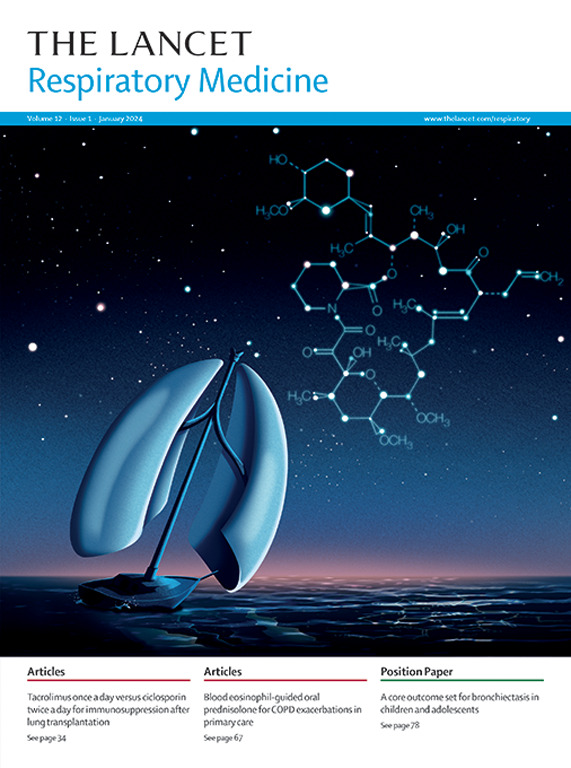Future treatment paradigms in pulmonary arterial hypertension: a personal view from physicians, health authorities, and patients
IF 38.7
1区 医学
Q1 CRITICAL CARE MEDICINE
引用次数: 0
Abstract
Novel treatments in pulmonary arterial hypertension (PAH) with significant pathophysiological and clinical responses have generated renewed interest in changing the course of the disease and achieving long-term disease control. Historically, the term disease modification was coined in rheumatological conditions with therapies that managed to treat the underlying condition as opposed to just alleviating symptoms. With the advent of novel therapies, the term disease modification was introduced in our discussions. Last year, a group of experts discussed this concept in PAH and proposed clinical trial designs to show disease modification in PAH. Taking a step further we convened a group of international experts at the 20th Global CardioVascular Clinical Trialists Forum, patients' representatives, and members of global regulatory agencies to discuss future treatment objectives and trial designs in PAH. The deliberations revealed the difficulty with securely defining disease modification, in that there are no pathophysiological biomarkers that reflect disease activity and studies are not designed or performed in a way that would support such designation. Regulatory agencies indicated they are going away from making this designation a priority in PAH. They declared interest in encouraging trials that advance interventions with significant pathophysiological effect, in particular showing reverse pulmonary vascular remodelling, which is likely to bring about more potent clinical response, partial or complete remission, and perhaps cure. In this Personal View, we provide a review of our understanding of defining disease modification in PAH along with providing definitions of what might constitute a partial or full remission in PAH.肺动脉高压的未来治疗模式:来自医生、卫生当局和患者的个人观点
肺动脉高压(PAH)的新治疗方法具有显著的病理生理和临床反应,引起了人们对改变病程和实现长期疾病控制的新兴趣。从历史上看,疾病修饰一词是在风湿病条件下创造的,治疗方法设法治疗潜在的疾病,而不仅仅是减轻症状。随着新疗法的出现,我们在讨论中引入了疾病修饰这一术语。去年,一组专家讨论了多环芳烃的这一概念,并提出了临床试验设计,以显示多环芳烃的疾病改变。在第20届全球心血管临床试验专家论坛上,我们召集了一组国际专家、患者代表和全球监管机构的成员,讨论PAH未来的治疗目标和试验设计。审议揭示了安全定义疾病修饰的困难,因为没有反映疾病活动的病理生理生物标志物,研究也没有以支持这种指定的方式设计或执行。监管机构表示,他们将不再把这种指定作为多环芳烃的优先事项。他们表示有兴趣鼓励进行具有显著病理生理效应的干预措施的试验,特别是显示肺血管反向重构,这可能带来更有效的临床反应,部分或完全缓解,甚至可能治愈。在这篇个人观点中,我们回顾了我们对PAH疾病改变的理解,并提供了PAH部分或完全缓解的定义。
本文章由计算机程序翻译,如有差异,请以英文原文为准。
求助全文
约1分钟内获得全文
求助全文
来源期刊

Lancet Respiratory Medicine
RESPIRATORY SYSTEM-RESPIRATORY SYSTEM
CiteScore
87.10
自引率
0.70%
发文量
572
期刊介绍:
The Lancet Respiratory Medicine is a renowned journal specializing in respiratory medicine and critical care. Our publication features original research that aims to advocate for change or shed light on clinical practices in the field. Additionally, we provide informative reviews on various topics related to respiratory medicine and critical care, ensuring a comprehensive coverage of the subject.
The journal covers a wide range of topics including but not limited to asthma, acute respiratory distress syndrome (ARDS), chronic obstructive pulmonary disease (COPD), tobacco control, intensive care medicine, lung cancer, cystic fibrosis, pneumonia, sarcoidosis, sepsis, mesothelioma, sleep medicine, thoracic and reconstructive surgery, tuberculosis, palliative medicine, influenza, pulmonary hypertension, pulmonary vascular disease, and respiratory infections. By encompassing such a broad spectrum of subjects, we strive to address the diverse needs and interests of our readership.
 求助内容:
求助内容: 应助结果提醒方式:
应助结果提醒方式:


